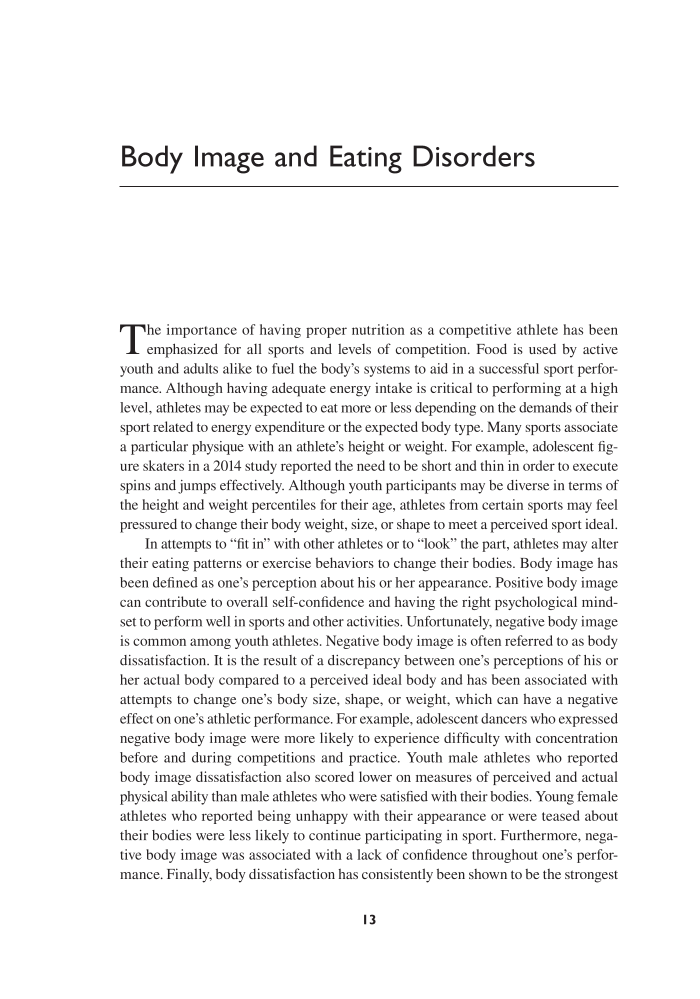13 Temphasized he importance of having proper nutrition as a competitive athlete has been for all sports and levels of competition. Food is used by active youth and adults alike to fuel the body’s systems to aid in a successful sport perfor mance. Although having adequate energy intake is critical to performing at a high level, athletes may be expected to eat more or less depending on the demands of their sport related to energy expenditure or the expected body type. Many sports associate a partic u lar physique with an athlete’s height or weight. For example, adolescent fig- ure skaters in a 2014 study reported the need to be short and thin in order to execute spins and jumps effectively. Although youth participants may be diverse in terms of the height and weight percentiles for their age, athletes from certain sports may feel pressured to change their body weight, size, or shape to meet a perceived sport ideal. In attempts to “fit in” with other athletes or to “look” the part, athletes may alter their eating patterns or exercise behaviors to change their bodies. Body image has been defined as one’s perception about his or her appearance. Positive body image can contribute to overall self-confidence and having the right psychological mind- set to perform well in sports and other activities. Unfortunately, negative body image is common among youth athletes. Negative body image is often referred to as body dissatisfaction. It is the result of a discrepancy between one’s perceptions of his or her actual body compared to a perceived ideal body and has been associated with attempts to change one’s body size, shape, or weight, which can have a negative effect on one’s athletic performance. For example, adolescent dancers who expressed negative body image were more likely to experience difficulty with concentration before and during competitions and practice. Youth male athletes who reported body image dissatisfaction also scored lower on measures of perceived and actual physical ability than male athletes who were satisfied with their bodies. Young female athletes who reported being unhappy with their appearance or were teased about their bodies were less likely to continue participating in sport. Furthermore, nega- tive body image was associated with a lack of confidence throughout one’s perfor mance. Finally, body dissatisfaction has consistently been shown to be the strongest Body Image and Eating Disorders
Document Details My Account Print multiple pages
Print
You have printed 0 times in the last 24 hours.
Your print count will reset on at .
You may print 0 more time(s) before then.
You may print a maximum of 0 pages at a time.









































































































































































































































































































































































































































